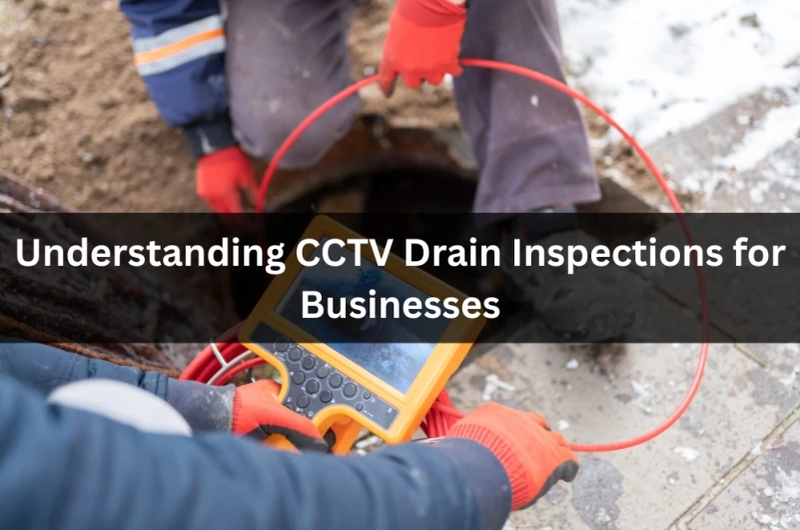Commercial plumbing rarely fails loudly at first. It whispers: slow sinks, sulphur smells, that one toilet that never quite clears. Guesswork leads to blown budgets and late-night callouts. The smarter path? Book cctv drain inspections so you see exactly what’s inside your lines before you cut concrete, close a store, or reschedule production.
What a CCTV drain inspection actually delivers
Think of it as a medical scope for pipes: live video, recorded findings, precise locations.
- Targeted diagnosis: cracks, collapses, fatbergs, roots, and unknown junctions.
- Accurate locating: metre counting and sondes pinpoint dig points on the surface.
- Condition grading: severity levels to prioritise repairs by risk, not guesswork.
- Evidence for quotes: footage removes disputes and compresses tender timelines.
With pictures and distances, you find a plan instead of speculation.
Why businesses save more by scoping first
Downtime costs more than a site visit. Scoping trims fat from the repair budget.
- Surgical repairs: shorter trenches and smaller reinstatement zones.
- Preventive scheduling: fix near-failures during planned shutdowns.
- Lifecycle planning: choose relining vs replacement based on real condition.
- Compliance support: documentation for insurers, landlords, and regulators.
On a retail site, a pre-dawn scope turned a weekend jackhammer job into a two-hour targeted fix. Trading day saved.
Common faults found in commercial lines
Commercial drains take a hammering: kitchens, foot traffic, fit-outs, and forklifts above shallow pipes.
- Grease build-up: lipids congeal and narrow flow in food precincts.
- Root intrusion: hairline cracks invite roots, then block flow entirely.
- Construction debris: grout, tile offcuts, and sand left after works.
- Joint displacement: ground movement misaligns older vitrified clay or earthenware.
Once you know the culprit, you can engineer a fix that lasts.
The inspection workflow, step by step
A disciplined process keeps crews safe and reports genuinely useful.
- Site briefing: service locations, access, and trading hours — no surprises.
- Initial jetting: clear silt and grease so the camera can see properly.
- Full-length survey: record, annotate, and map each reach with distances.
- Report & plan: deliver footage, stills, and repair options with pros/cons.
Good providers feel more like asset managers than tradies — because that’s what the task demands.
Sydney context: drainage support and guidance
Properties in Sydney have specific channels for help when surface flooding or lot-to-lot drainage gets messy. It’s worth bookmarking drainage problem solutions in Sydney to understand responsibilities, mitigation steps, and when council advice applies to your site.
- Responsibility mapping: private vs public assets; who owns which segment.
- Surface vs subsurface: different fixes for runoff compared to pipe failures.
- Documentation: evidence that speeds requests, claims, and approvals.
- Coordination: align plumbers, landscapers, and council works windows.
Knowing the system keeps projects moving when the rain won’t.
Choosing the right inspection partner
Not all rigs or reporting styles are created equal. Ask pointed questions.
- Camera quality: high-resolution, self-levelling heads with strong lighting.
- Locating accuracy: sondes and receivers for precise surface marks.
- Report clarity: snapshots, grading, and even CAD overlays for large sites.
- Turnaround time: fast deliverables so downstream works don’t stall.
Request a sample report. You’ll know within a minute if it meets the brief.
Lessons from a Western Sydney warehouse
A warehouse amenities line is blocked every fortnight. Jetting helped — briefly. Scoping found an offset joint beneath a newly poured slab; water hammered the gap, catching lint and paper. The fix was a short weekend relining job. Monday, operations resumed without a hitch. Evidence beats repetition, every time.
Budgeting and next steps after the scope
The camera doesn’t fix the pipe — but it tells you how to spend wisely.
- Relining vs replace: weigh trench risk, depth, and surface reinstatement cost.
- Staged works: sequence by risk during off-peak or overnight windows.
- Maintenance schedule: lock in proactive jetting where grease load is high.
- As-built records: keep footage and maps with asset registers.
Documentation today means fewer panicked phone calls later.
Interpreting CCTV reports: what those grades really mean
Inspection videos are only useful if everyone understands the scoring. Grades translate footage into risk and timing for works.
- Structural vs service defects: cracks and collapses are structural; grease and wipes are service issues.
- Severity tiers: low means monitor, moderate suggests planned works, and high indicates urgent intervention.
- Location markers: metre counts tied to surface paint or maps make quoting accurate and repeatable.
- Recommended actions: jetting, patch repair, sectional relining, or full replacement align with defect type.
Agree on definitions before the meeting, and the budget chat gets shorter. Clear grading underpins fair quotes and fewer surprises.
Coordinating repairs with minimal disruption to operations
Good plumbing projects disappear into the schedule. Plan around trading windows, deliveries, and safety to keep revenue steady.
- Time windows: book night or pre-open shifts for loud or dusty work in public areas.
- Staging zones: set clean access paths and laydown areas to protect stock and patrons.
- Communication plan: brief staff and tenants with timings, hazards, and contact points.
- Contingency kit: Have spill kits, barriers, and temporary amenities ready for hiccups.
Think like an event planner with a toolbox. When logistics hum, even big fixes feel uneventful.
The practical wrap-up
Businesses don’t need heroic plumbing; they need predictability. A CCTV inspection turns mystery into manageable tasks: what’s wrong, where it is, how urgent, and how to fix it with minimal disruption. Build a responder list, plan around trading hours, and keep records centralised. If a sudden failure hits at 2 a.m., you’ll move faster and spend smarter — and it helps to be familiar with emergency solutions for blocked drains so your immediate actions don’t make the eventual repair harder.



